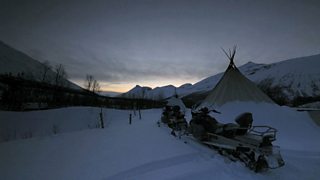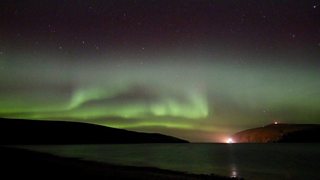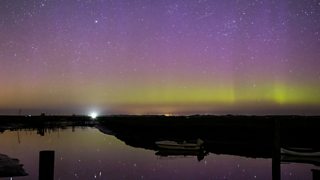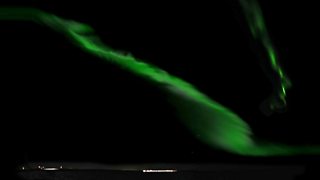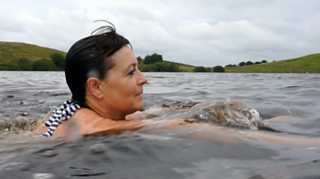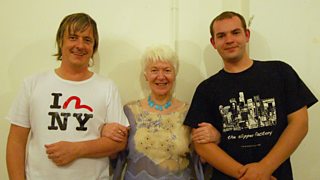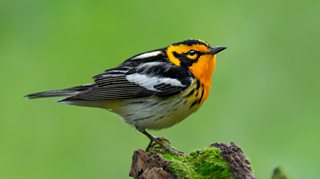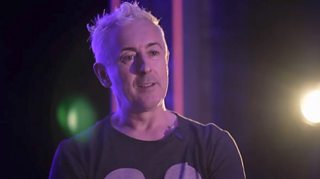What are the Northern Lights and where can I see them in the UK?
As His Dark Materials approaches it dramatic conclusion, Lyra races north where she encounters the mysterious Northern Lights. But you don't have to travel to the Arctic to witness this incredible natural phenomenon — it is possible to see them from the UK.
The Northern Lights, also known as the Aurora Borealis, are an extraordinary and beautiful lightshow seen high up in the night sky. They can form rippling curtains of colour that are most commonly green, though yellow, red and purple can also appear.
Those lucky enough to have seen a display will often describe it as a poignant moment. Speaking on the Brainwaves podcast, physicist Dr Melanie Windridge recalled her own first encounter with them:
"I felt incredibly grateful ... to see this light moving in the sky. It does move you ... maybe it’s the other worldliness of it all."
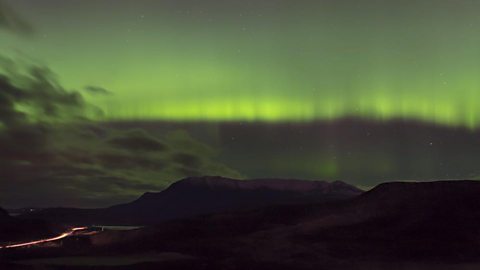
"Magnetospheric Tai Chi" and how it causes the aurora displays we see
Dr Melanie Windridge explains some of the science behind the northern lights
How are they caused?
According to Dr Windridge, the lights appear when charged particles from the sun called the solar wind interact with Earth's magnetic environment to accelerate electrons into the atmosphere at the north and south poles. There they collide with oxygen and nitrogen which creates light.
Where can I see them?
The aurora occur in rings around the poles, so to see them clearly you'll need to be as far north as possible and in an area free of light pollution.
Dr Winridge explains, "The area where they have them most frequently is called the aurora zone. That is, broadly speaking, between 60-70 degrees latitude. It stretches through Alaska, Canada, the tip of Greenland, Iceland, northern Scandinavia and northern Siberia."
"If you're further out of that zone, so in Scotland, say, it takes a bit more elevated solar activity to bring that ring down."
"It's difficult to predict them, but the sun goes through an 11 year cycle where its activity waxes and wanes, so when you're in a peak or a solar max there’s probably more auroral activity, more coronal mass ejections coming and faster solar wind hitting the earth causing the aurora."
Why do they look better in photographs?
"We have elevated expectations of the aurora now because we see so many incredible pictures," says Dr Windridge.
"But the camera can absorb a lot more light than the human eye can, so effectively the camera can see more than you can. It's there but you just can’t see it. The human eye is not as sensitive to red wavelength, it's much more sensitive to the green and the yellows and so you often see a lot more of the red colours coming through in the photographs than you will remember seeing by eye."
Stunning displays of the Northern Lights
On ������̳ Sounds
-
![]()
Brainwaves: The Northern Lights
Pennie Latin meets Dr Melanie Windridge to hear about the science of the Northern Lights.
On ������̳ iPlayer
-
![]()
His Dark Materials
Secrets and dangers lie ahead for young Lyra Belacqua in an epic tale of stolen children and the mysterious substance of Dust.
Latest features from ������̳ Scotland
-
![]()
'Wild swimming helps me process the grief of losing my son'
The benefits of cold water therapy.
-
![]()
Winter adventures are appealing, but an expert advises caution
Trips in winter require particular knowledge and skills.
-
![]()
The rescuers: Why volunteers risk their lives in mountain emergencies
Landward meets members of the Cairngorm Mountain Rescue Team.
-
![]()
‘Look for the light’ – practical tips to help you through another winter with SAD
Useful advice and tips to combat low moods at this time of year.
-
![]()
How you could be a binge drinker without even knowing
Binge drinking is classed as fewer units than many people may realise.
-
![]()
How chocolate biscuits and drama classes helped one man leave prison behind
The healing power of creativity.
-
![]()
'When people believe in you, it’s life-changing'
Author Graeme Armstrong revisits the man who helped turn his life around.
-
![]()
The 'breath-taking' display of US birds swept on to British soil
Recent storms have brought rare birds to our shores.
-
![]()
Six things we learned about Alan Cumming on Take the Floor (Spoiler: includes accordions)
The actor spoke to Take the Floor's Gary Innes.
-
![]()
How street gangs trap young men in a dangerous cycle of violence
The almost inescapable pull of life in a gang.
-
![]()
Why stylist Gok Wan believes there's no such thing as bad fashion
The fashion expert says we should stop following rules and do what feels right.
-
![]()
Is sending a CV still the right way to apply for a job?
They've been central to job applications for years, but are they worth it?
